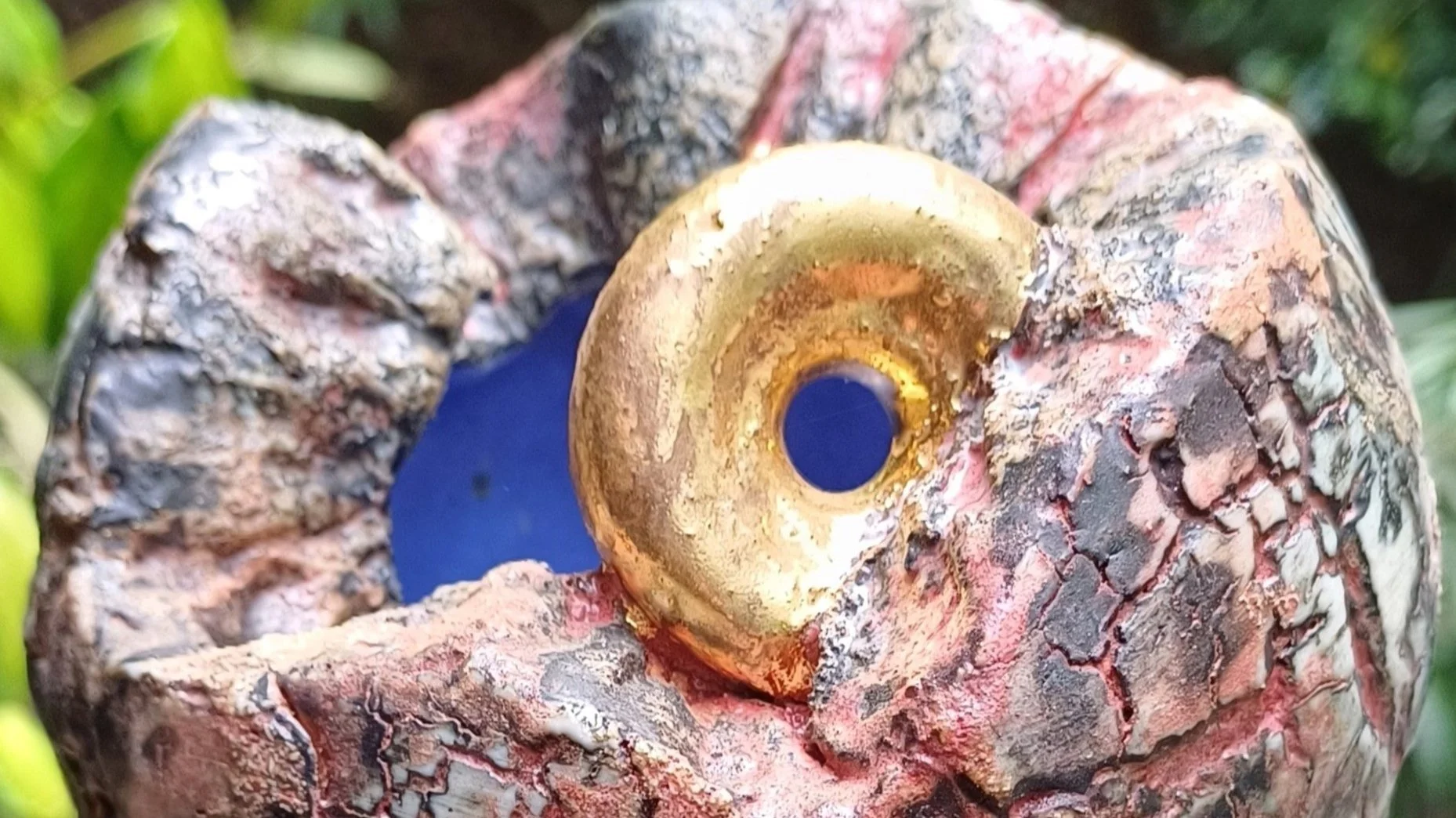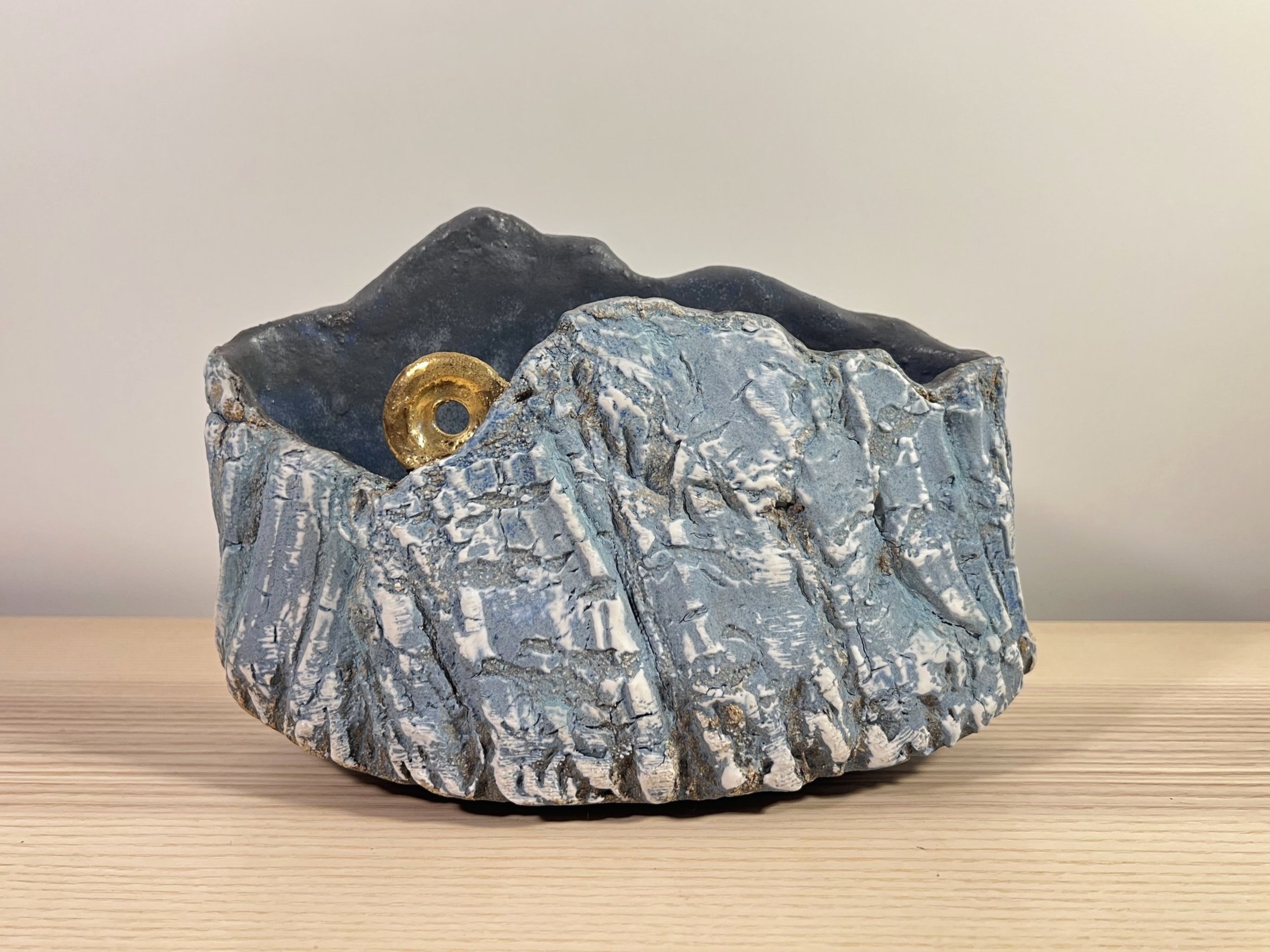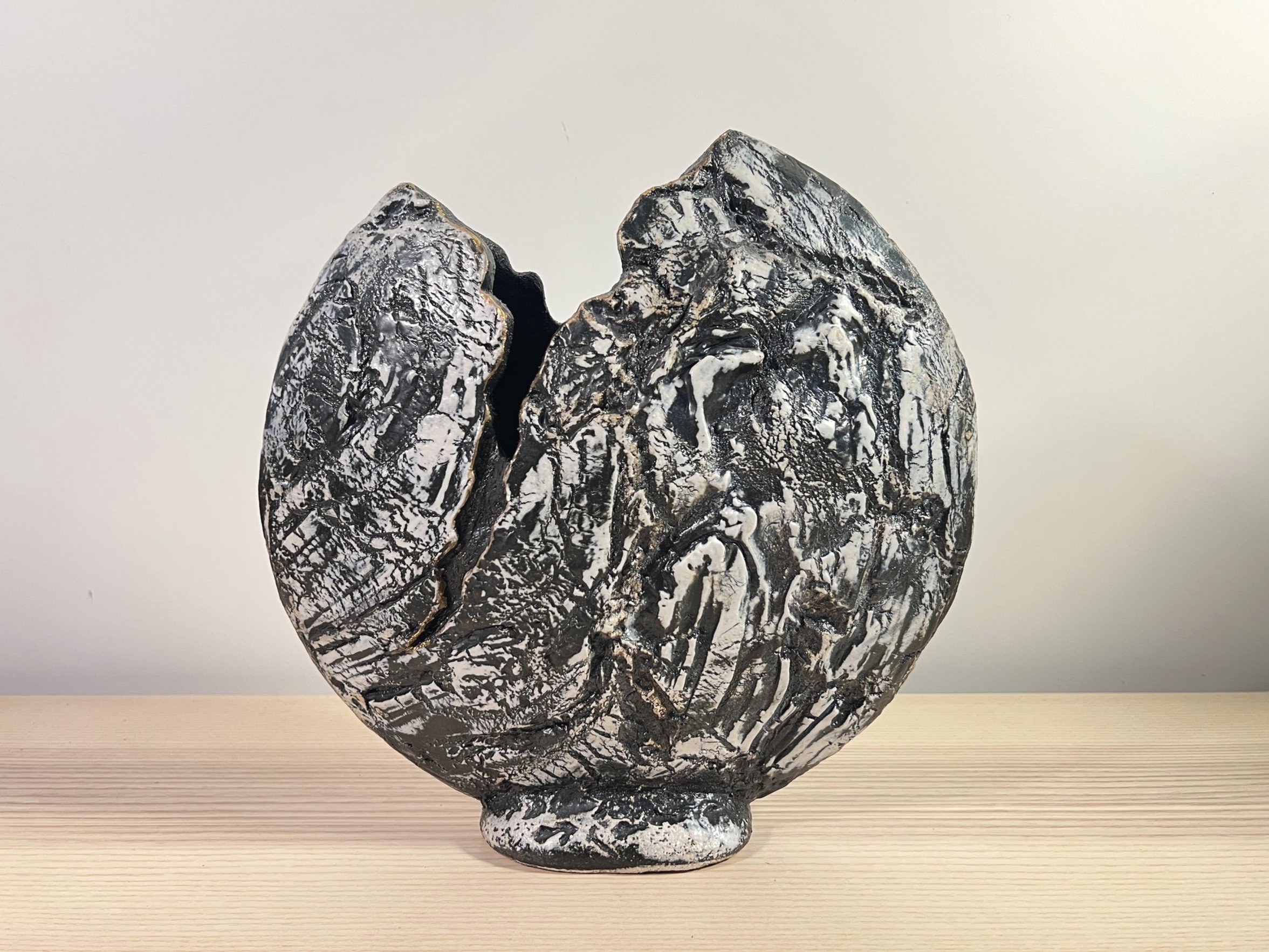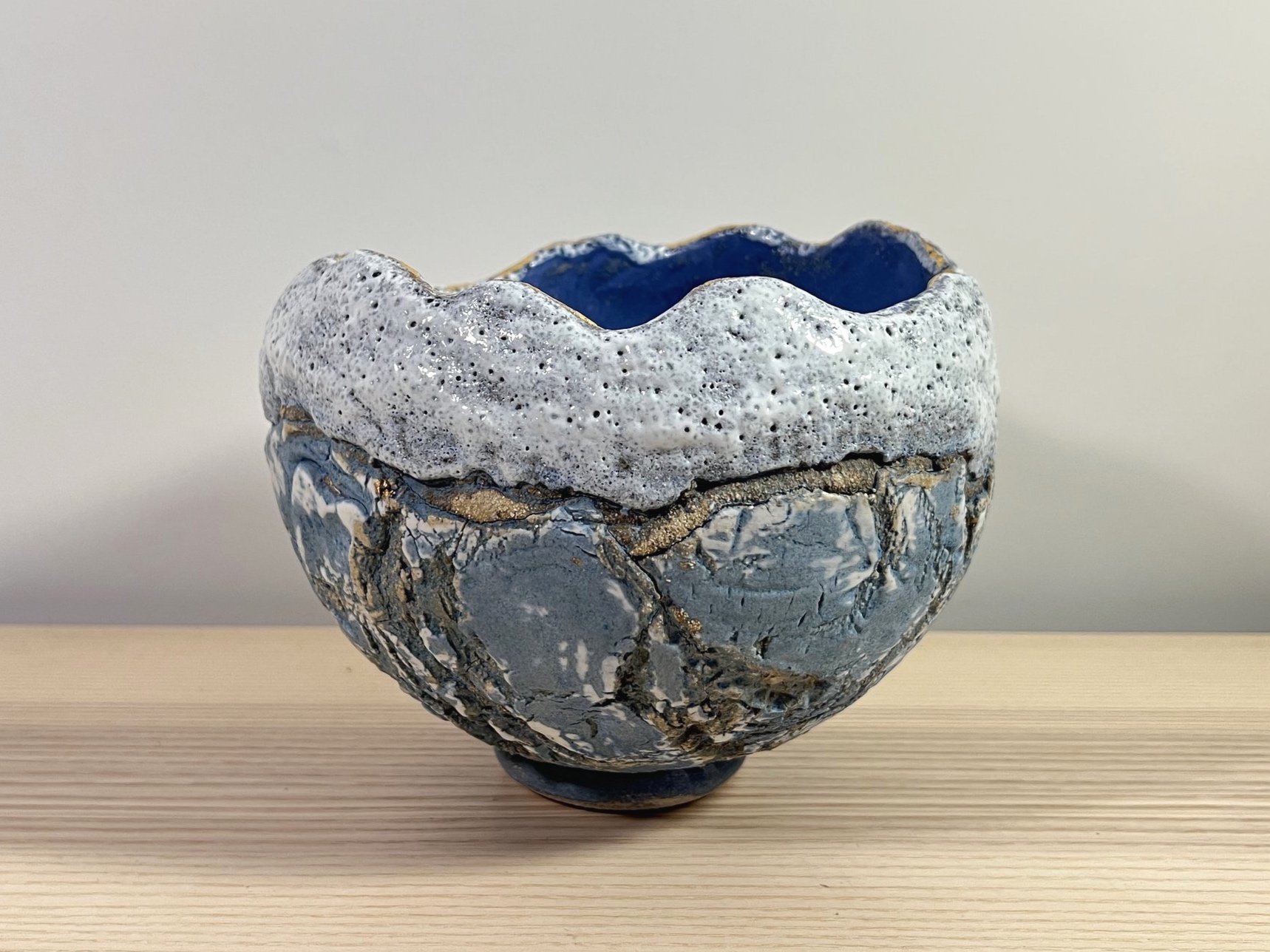“I prefer to stay within the realms of the vessel format, yet allow them to take on a distinctive sculptural identity. Rims, handles, form and balance are commonplace within traditional ceramics, yet I place them in a unique integrated structure which elevates them beyond their own identifiable function and so gives them another meaning. Their conclusive forms are recognised as jugs, bowls and vessels, yet they represent profound arguments concerning issues of an individual’s perception and memory of an ever-changing landscape.
I was born in Derry, Northern Ireland and grew up near the border during the Troubles of the 1970s and ‘80s. To escape the political conflict, I often spent time roaming Donegal and the rugged West Coast of Ireland exploring its landscapes and local amenities. As a result, my initial work of large thrown forms was based on ancient Celtic monuments such as standing stones and stone circles. Even then I was interested in the vessel format, but with a sculptural narrative. Later, I began to reflect more on the landscape itself, in which the Celtic monuments were found, incorporating geological elements, natural colours, and marks of human activity on the landscape, into my vessels. The resulting monumental jugs, vases and bowls with their fractured surface textures provoke to the onlooker to question the value of a vessel as a piece of sculpture.
Way back, when I started creating this type of work, I would draw and take rubbings of the rocks and surfaces whilst I was out walking looking for inspiration. These days, it’s easier to capture these photographically, and when return home, I collage the printed photos together, so the forms evolve organically from their source.
The pieces are made from a laminated clay process. The outer layer is a porcelain clay, which cracks and shrinks at 14%. The inner layer needed to be a sturdy clay to withstand the various firings in my making process, so I use craft crank which shrinks at 4%. The middle layer is my own mixture which counter-reacts the shrinkage between the porcelain on the outside with the craft crank on the inside. Without that middle layer, the porcelain would simply shrink and crack off during the drying and firing process.”
Billy Adams
Inspired by the beautiful and dramatic Cenarth Falls and Cenarth Bridge on the River Teifi, in the Welsh hills near Cardigan.
Outdoor Sculpture
‘large outdoor landscape planter’
glazed ceramic
65cm x 47cm x 28cm
‘Outdoor landscape planter’
glazed ceramic
65cm x 37cm x 24cm


























